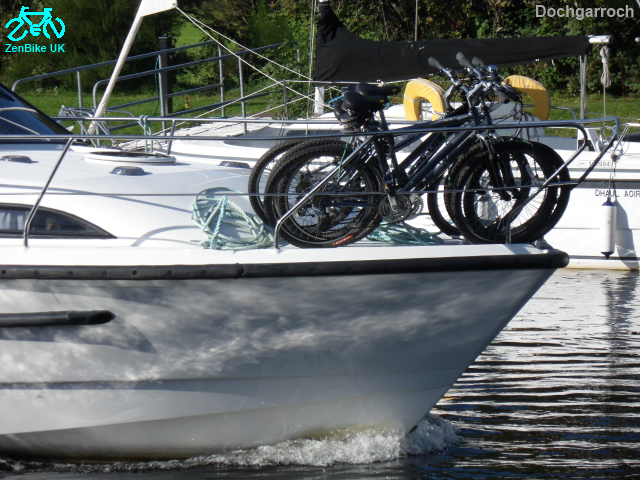
The church spires along the East side of the River Ness have recently been joined by the tall jib of a crane. This is just one of the many construction vehicles and plant working on Phase 1 of the River Ness Flood Alleviation Scheme.
This view is looking upstream from near the tidal opening to the sea.

The plan is to re-build and reinforce the banks on both sides of the River.
Much preparatory work was done earlier this year.
This construction phase started about a month ago.
The current work is on and around Bank Street.

My particular interest is the effect on cycling is.
So I took a trip going upstream starting from Douglas Row.
This is part of the NCN Route 1 going South and is normally one-way, access only and so has quite light traffic. It's also used by touring cyclists mainly in Summer.
The significance of the new "ROAD CLOSED" sign is simply that there is no exit for motor vehicles at the other end.

I rounded the corner into Douglas Row.
It's never that busy but it was noticeably more noisy with the work going on.
The river level is low just now but this street can be submerged when the river in spate meets back-flow from a high tide. The houses get flooded too, either directly through the doors or by water penetration through the floors from below.
One purpose of the scheme is to avoid such damage in the future.

The road at the end of Douglas Row is fenced off leaving only the pavement.
When I visited, the signs shown here were obscured behind a van.
In truth, the route is obvious so there is no real harm.
The construction site is very cramped.
Arrangements may not always be perfect but safety is maintained.

All three roads are fenced off at the junction with Friars Lane and Bank Street.
The pavement route goes around the corner from Douglas Row into Friars Lane then doubles back on the other side to the beginning of Bank Street.

The pavement route up Friars Lane narrows to less than a metre.
But none of this is of any great problem or concern to local cyclists.
The road to the left here is Friars Street which is open to one-way traffic.
This is also the North heading branch of NCN Route 1.

Doubling back down Friars Lane.
This carries NCN Route 1 in both directions.
Usually cycling, in either direction, would be on the road.
With a single pavement being the only route, all users have to be considerate.
And that seems to be what's happening.
Round the corner into Bank Street and the serious work begins.
Watching diggers and trucks is always an attraction.

This is roughly the same view from a higher view point.
The construction work had finished and was being reviewed by engineers.
Lots of Hi-Viz jackets in evidence at all times.
The Greig Street Bridge is a popular route across the River for pedestrian and cyclists.
The construction work seems to be having little or no effect on travellers.

Pedestrians and cyclists share the Bridge at a leisurely rate.
Cyclists are concerned with safety but dress for warmth.
Woolly bonnets are more common than cycling helmets.
Some pedestrians make a special effort with their appearance.

There was more work going on upstream of the Bridge.
The bank is being extended slightly at this point for a seating area.

The River Cafe and Restaurant is open as normal and even offers tables and chairs outside (for very hardy customers).

Highland Print Studio remains open for its usual classes and members.
Anybody is welcome to browse the prints they have on offer.
Print makers come here from all over the Highlands, Scotland and abroad.
One recent visitor was Mike Inglis whose output includes the mural near Eastgate.
The construction phase is under way but in among the noise and disturbance it's business as usual on Bank Street.
Your comments are welcome.
























